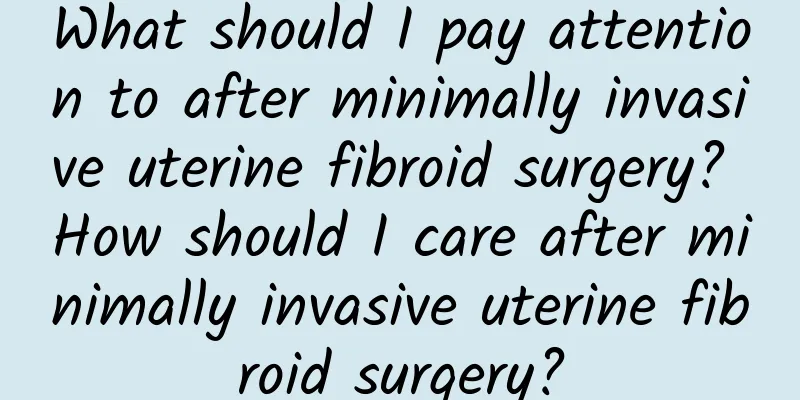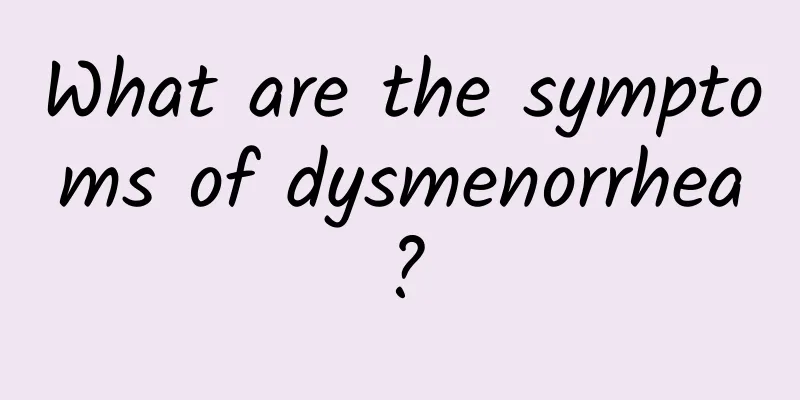What should I pay attention to after minimally invasive uterine fibroid surgery? How should I care after minimally invasive uterine fibroid surgery?

|
For patients with uterine fibroids, treatment should be based on the patient's fertility requirements, age, symptoms, size and location of the fibroids. So, do you know what minimally invasive uterine fibroid surgery is? What should be paid attention to during surgery? For minimally invasive surgery for uterine fibroids, doctors should comprehensively consider the patient's age, fertility requirements, symptoms, size, location and number of fibroids to determine different treatment plans. Patients with small, small and asymptomatic uterine fibroids generally do not need uterine fibroid surgery; patients with enlarged uterus and no obvious symptoms within 2 months of pregnancy can be treated with drugs; patients with enlarged uterus, obvious symptoms or secondary anemia after more than 2 months of pregnancy can be treated with uterine myomectomy and hysterectomy. Surgery can also be divided into traditional open surgery and minimally invasive surgery. Before surgery for uterine fibroids, pay attention to personal hygiene and clean the umbilical cord with warm water. It is best to use a cotton swab dipped in soapy water or vegetable oil to remove dirt in the umbilical cord hole. In terms of diet, the day before surgery, it should be light and easy to digest, avoid eating too much fish and meat to prevent postoperative intestinal bloating. At the same time, be mentally prepared, adjust your mental state, and ensure adequate sleep. If necessary, follow the doctor's advice and take oral sedatives. After minimally invasive surgery for uterine fibroids, you should pay attention to consolidating the surgical results and recovering your physical strength as soon as possible. 1. Within 6 hours after uterine fibroid surgery, lie flat with a pillow and your head to one side to prevent vomit from being inhaled into the trachea; 2. Since most patients do not feel pain after uterine fibroid surgery, do not neglect massaging the patient's waist and legs, and turn the patient over every half an hour to promote blood circulation and prevent bedsores; 3. The urinary catheter can be removed after the infusion on the same day, and the patient is encouraged to get out of bed and move around; 4. 6 hours after minimally invasive surgery for uterine fibroids, patients can eat a small amount of liquid food, such as porridge soup, noodle soup, etc. Do not give patients sugary drinks, such as sweet milk and soy milk powder; The harm of uterine fibroids is huge, and patients must be careful to avoid aggravating the condition and regret. Of course, the treatment of uterine fibroids should choose a regular professional gynecological hospital to avoid affecting the treatment effect. |
Recommend
Does endometriosis need treatment?
Endometriosis requires treatment, which may inclu...
Chronic adnexitis medication guide
Many female friends suffer from symptoms such as ...
Things to note in daily life to relieve dysmenorrhea
Women often feel uncomfortable before and after m...
TCM mediation of two types of functional uterine bleeding
Functional uterine bleeding is called "menor...
Early symptoms of vulvar leukoplakia
In the early stages of vulvar leukoplakia, sympto...
Lose weight easily with 5 good habits before going to bed
Many weight loss methods are closely related to s...
What is the probability of uterine fibroids becoming cancerous? What are the symptoms of uterine fibroids becoming cancerous?
What is the probability of uterine fibroids becom...
Experts explain how to prevent allergic vaginitis
Clinically, many female friends suffer from vagin...
Is sleeping in healthier? Sleeping an extra hour a day can help you lose weight
According to CBS News, American scientists have d...
Endometrial cancer is not without signs. Two symptoms appear in the body, indicating that the uterus has been damaged.
Aunt Li is 50 years old this year. She is usually...
Ovarian cyst prevention is helpful for women to prevent diseases
Ovarian cysts are a common disease, and many wome...
Yan Yige is extremely fat and extremely thin, with a 30kg difference. The secret to her successful weight loss is...
Yan Yige became ill a few years ago and experienc...
What causes congenital absence of vagina in women?
What is the cause of congenital absence of vagina...
What are the symptoms of cervical erosion?
What are the symptoms of cervical erosion? Cervic...
What are the main symptoms of adnexitis?
Adnexitis is a gynecological disease with a relat...









